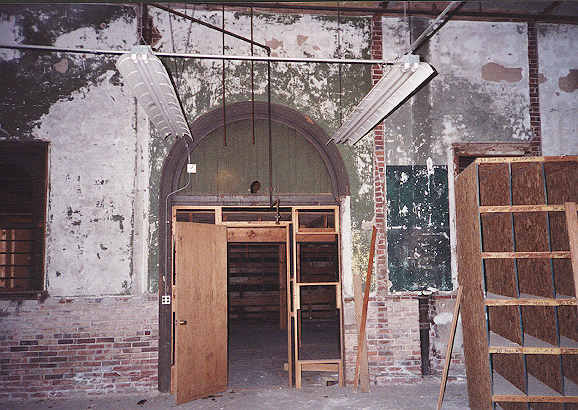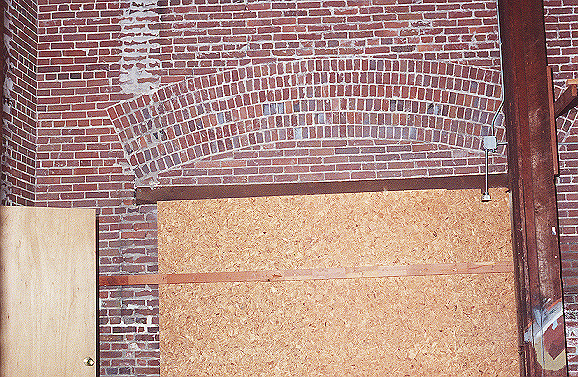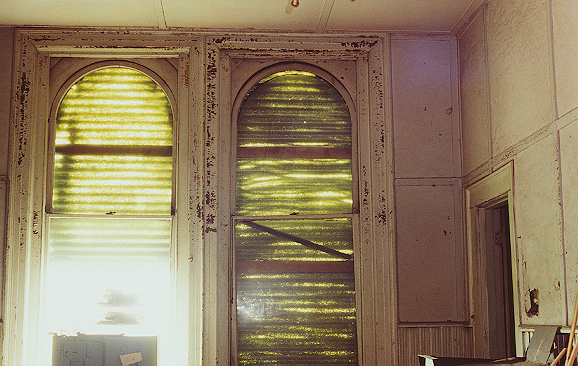 |

|
of the Two-Story Section
Inside the first floor offices, plaster remnants gave a hint of how this area was finished out. The original front door had been long since removed, but part of the original arched trim remained. Image [1] shows what would have been a view looking out the front door onto Second Street, now looking into the 1962 warehouse addition. It is speculated that the archway space over the door originally contained glass with the railroad name and address in ornate gold leaf lettering. The arched windows [2] had square trim on the interior. It appears that the office was finished out with wainscoting (probably "boxcar" siding) on the lower 3 to 4 feet of wall, where bare brick is visible in the photograph. The plastered walls above this wainscting was painted a dark green. Given this dark decor and the state of interior lighting in 1900, desk locations near a window were probably highly coveted.

[2]
The first floor office area included an arched door on both the track side and wagon side, and some freight was obviously processed in this area. Two doorways with vertically sliding doors provided access from the office area into the freight warehouse area. Illustration [3] shows the brickwork above the easternmost of these doors, which had been sealed off in recent years. Note the differences in mortar pattern (thicker, gray mortar) compared to the outside bricks. Also note the areas which were covered with the wooden housings holding the door counterweights. The west door and counterweight system was still intact, though blocked open. The City of Little Rock's sudden cancellation of a planned photographic survey (due to their planned "surprise" demolition) resulted in no photographic coverage of many such details. These sliding doors, while substantial, were much lighter construction than those on the outside of the building.

A chimney on the east side of the building extended from the first floor through the roof, with flue openings on each floor for stoves. There was some remaining evidence that the building also had steam heat, at least in the office area. A boiler house located between the Choctaw freight and passenger station likely provided steam to both buildings through a series of pipes in underground tunnels. There was no apparent access between the first and second floor offices, at least within the two-story part of the building. Original access to the second floor was via an exterior door on the west side, with an elevated walkway leading to Second Street. At the time of demolition, that door had been sealed, and second floor access was gained from the south side, using stairs in the freight warehouse area. This access was not believed to be original. The design of limited access to the second floor offices was not uncommon, and cashiers and paymasters were often assigned to this space because it was believed more secure. On the second floor, most of the wood trim remained, including framing around windows [4], tongue and groove wainscoating [5], and several large cabinets [6] that were likely built with the station.

[5]
[6]
Continue to the next photograph section |